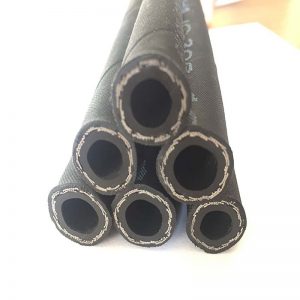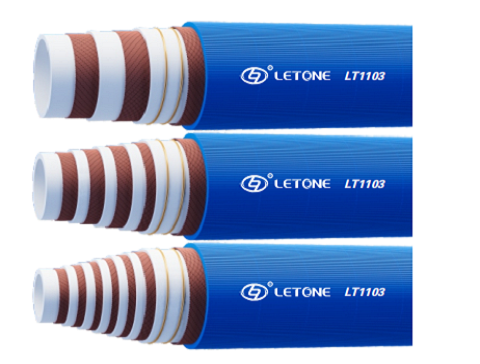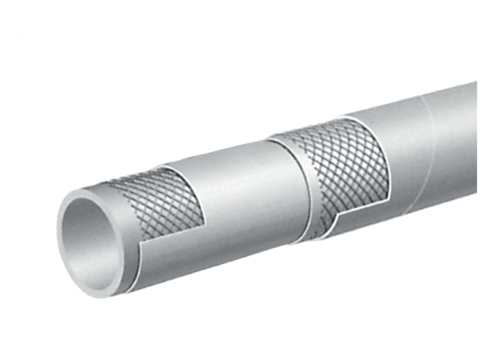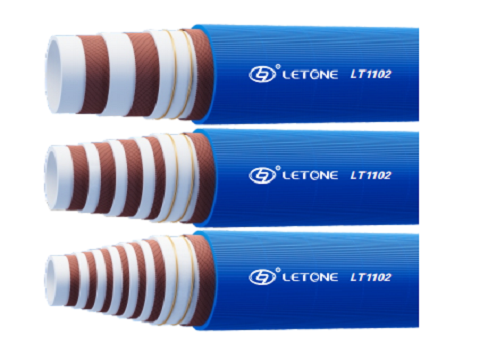With the continuous development of modern construction engineering, concrete conveying rubber hoses, as an innovative building material product, play an important role in the construction industry. This article will provide a detailed introduction to the characteristics, advantages, and applications of rubber hoses for concrete conveying during construction, in order to provide readers with a comprehensive and in-depth understanding.
Concrete conveying rubber hose, as the name suggests, is a hose designed specifically for conveying concrete, made of high-strength rubber material with excellent compressive strength and wear resistance. Compared with traditional hard pipelines, concrete conveying rubber hoses are more flexible and adaptable, capable of achieving various irregular shapes such as bending and twisting during construction, greatly improving construction efficiency and work flexibility.
 The advantage of rubber hoses for concrete conveying lies in their excellent durability and reliability. Due to the use of rubber materials, the hose has excellent compressive strength and wear resistance, which can withstand high pressure and frequent wear, reducing the failure and maintenance costs caused by pipeline aging. In addition, the smooth inner wall of the hose can effectively reduce the resistance of concrete, improve conveying efficiency, and maintain the uniformity and quality stability of concrete. At the same time, the material of the hose is resistant to chemical corrosion and can resist chemicals in concrete, extending its service life.
During the construction process, concrete conveying rubber hoses have unique flexibility and adaptability. The length of its hose can be adjusted according to engineering needs, making it convenient for operation on the construction site. Due to the flexibility of the hose, it can freely bend and twist on the construction site, adapting to various shapes and angles of transportation needs. Moreover, the inner wall of the hose is smooth, reducing the resistance of concrete flow and improving construction efficiency. In addition, the hose can also be spliced through connectors, facilitating multi pipe connection and long-distance transportation, greatly improving the flexibility and efficiency of construction.
In summary, concrete conveying rubber hoses, as an innovative building material product, are becoming increasingly widely used in the construction industry. Its excellent durability, reliability, and unique flexibility provide reliable solutions for the transportation needs of modern construction projects. I believe that in the future, with the continuous progress of technology, concrete conveying rubber hoses will continue to bring more innovation and convenience to the construction industry.
The advantage of rubber hoses for concrete conveying lies in their excellent durability and reliability. Due to the use of rubber materials, the hose has excellent compressive strength and wear resistance, which can withstand high pressure and frequent wear, reducing the failure and maintenance costs caused by pipeline aging. In addition, the smooth inner wall of the hose can effectively reduce the resistance of concrete, improve conveying efficiency, and maintain the uniformity and quality stability of concrete. At the same time, the material of the hose is resistant to chemical corrosion and can resist chemicals in concrete, extending its service life.
During the construction process, concrete conveying rubber hoses have unique flexibility and adaptability. The length of its hose can be adjusted according to engineering needs, making it convenient for operation on the construction site. Due to the flexibility of the hose, it can freely bend and twist on the construction site, adapting to various shapes and angles of transportation needs. Moreover, the inner wall of the hose is smooth, reducing the resistance of concrete flow and improving construction efficiency. In addition, the hose can also be spliced through connectors, facilitating multi pipe connection and long-distance transportation, greatly improving the flexibility and efficiency of construction.
In summary, concrete conveying rubber hoses, as an innovative building material product, are becoming increasingly widely used in the construction industry. Its excellent durability, reliability, and unique flexibility provide reliable solutions for the transportation needs of modern construction projects. I believe that in the future, with the continuous progress of technology, concrete conveying rubber hoses will continue to bring more innovation and convenience to the construction industry.







